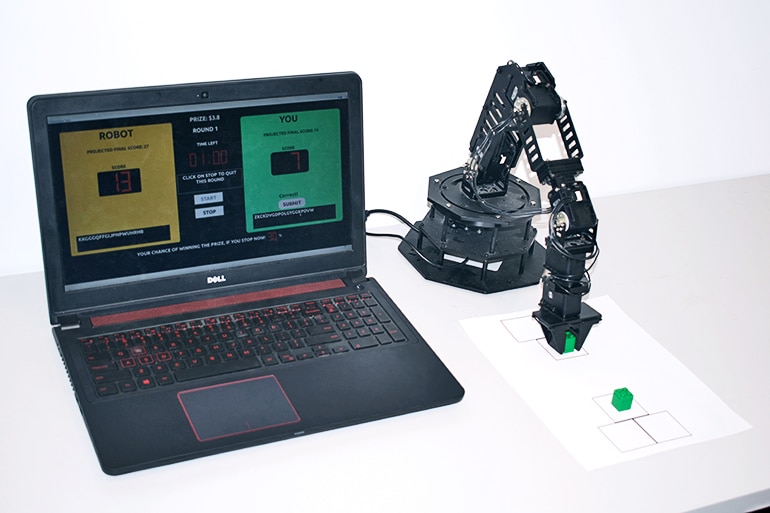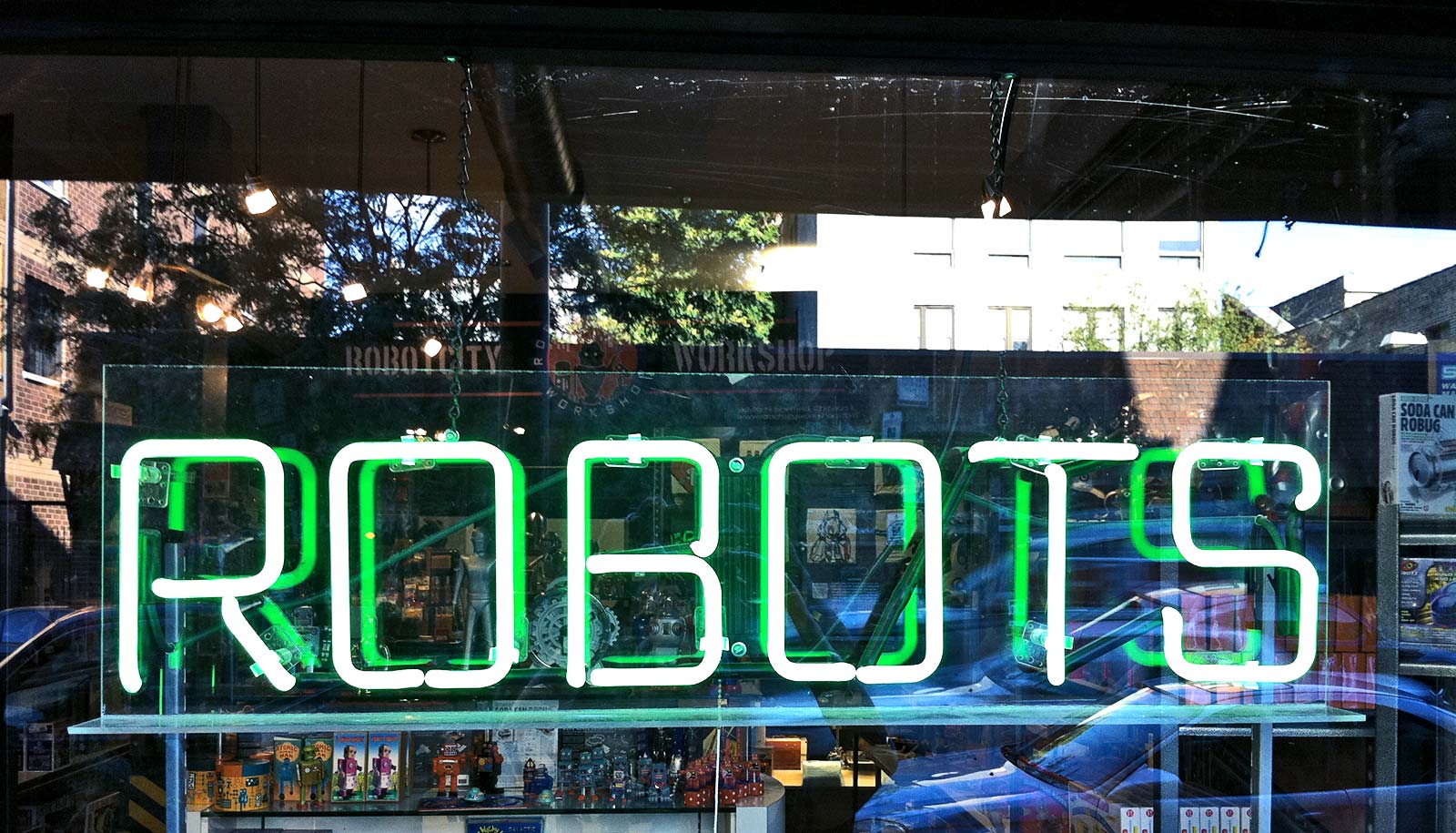When robots beat humans in contests for cash prizes, people consider themselves less competent and expend slightly less effort—and tend to dislike the robots, according to a new study.
The study brought together behavioral economists and roboticists to explore, for the first time, how a robot’s performance affects humans’ behavior and reactions when they’re competing against each other simultaneously.
The findings validated behavioral economists’ theories about loss aversion, which predicts that people won’t try as hard when their competitors are doing better, and suggests how workplaces might optimize teams of people and robots working together.

“Humans and machines already share many workplaces, sometimes working on similar or even identical tasks,” says Guy Hoffman, assistant professor in the Sibley School of Mechanical and Aerospace Engineering at Cornell University.
“Think about a cashier working side-by-side with an automatic check-out machine, or someone operating a forklift in a warehouse, which also employs delivery robots driving right next to them,” Hoffman says.
“While it may be tempting to design such robots for optimal productivity, engineers and managers need to take into consideration how the robots’ performance may affect the human workers’ effort and attitudes toward the robot and even toward themselves. Our research is the first that specifically sheds light on these effects.”
Playing with a robot
In the study, humans competed against a robot in a tedious task—counting the number of times the letter G appears in a string of characters, and then placing a block in the bin corresponding to the number of occurrences. A lottery based on the difference between the human’s and robot’s scores determined the person’s chance of winning each round: If their scores were the same, the human had a 50 percent chance of winning the prize, and that likelihood rose or fell depending which participant was doing better.
To make sure competitors were aware of the stakes, the screen indicated their chance of winning at each moment.
For the behavioral economists, the study offered an opportunity to test theories about loss aversion in a controlled setting; researchers can’t control the effort of two humans in competition, but they can control a robot’s effort. It also showed how loss aversion might affect humans’ effort in a simultaneous competition, which had not been previously studied.
After each round, participants filled out a questionnaire rating the robot’s competence, their own competence, and the robot’s likability. The researchers found that as the robot performed better, people rated its competence higher, its likability lower, and their own competence lower.
“We were surprised that people found themselves less competent against a fast, competitive robot, even though there’s no direct interaction,” says first author Alap Kshirsagar, a doctoral student in mechanical engineering. “The robot is doing its own work, you’re doing your own work.”
Eyes on the prize?
Most participants did not seem to anthropomorphize the robot, with comments including, “I sort of realized, I am just competing with an idea of mechanization, and the arm is just a prop to signify it”; though one participant wrote, “It was obvious when the robot was going easy on me.” In fact, the robot’s efforts varied by round but did not change within each round.
The fact that the value of the cash prize did not appear to significantly influence people’s efforts surprised the researchers, though previous experiments suggested people would try harder as the value rose.
The researchers plan to explore the reason for that in future work, but say participants may have been so focused on winning they didn’t care about the actual prize value.
The researchers will present the study at the ACM/IEEE International Conference on Human-Robot Interaction in Daegu, South Korea.
The Israel Science Foundation partially supported the research. Additional researchers from Cornell and the Hebrew University of Jerusalem contributed to the work.
Source: Cornell University



